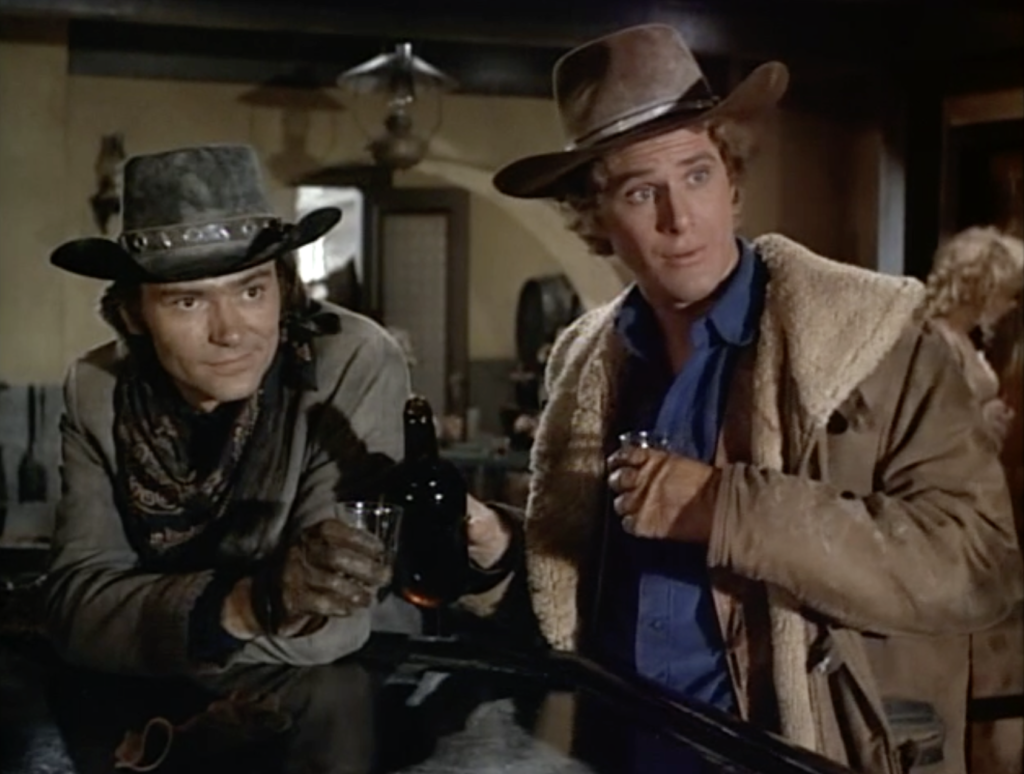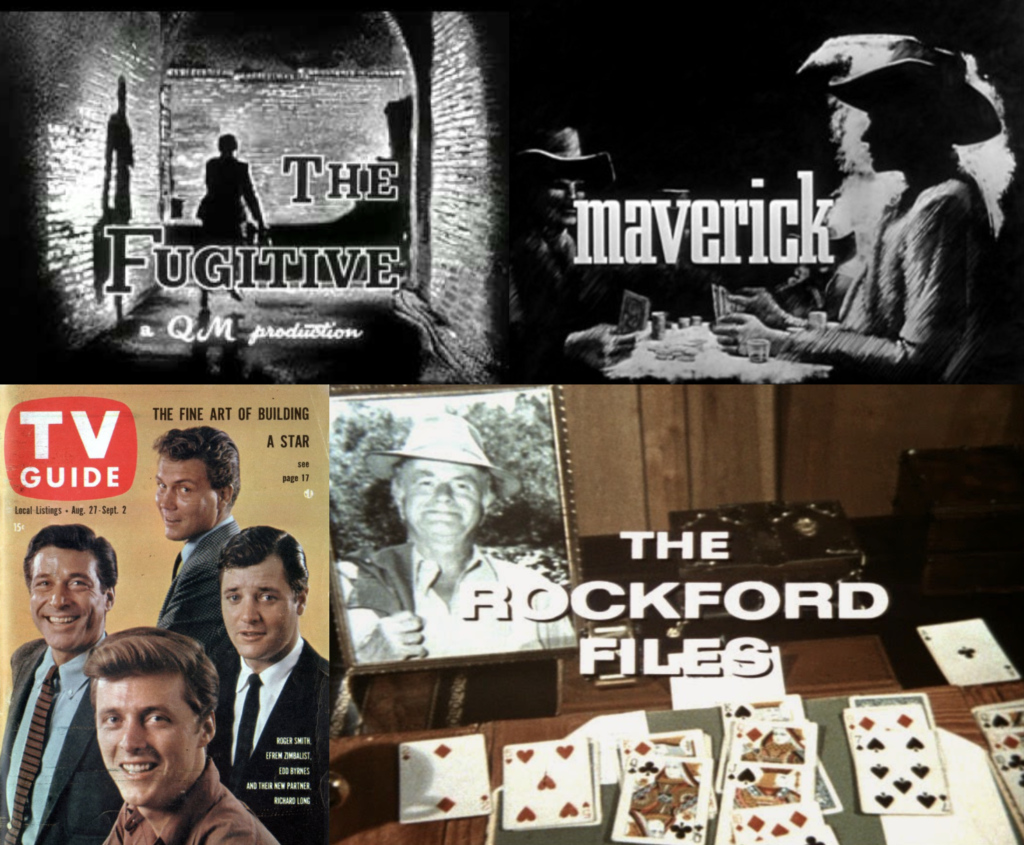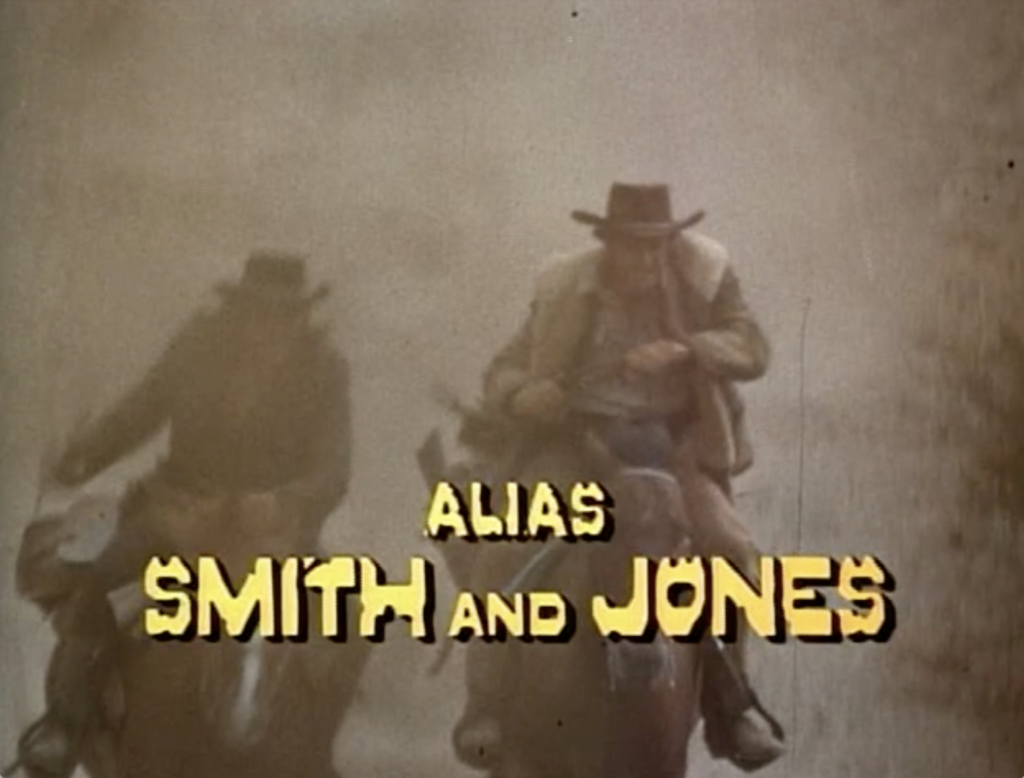This is just a blog post about a TV show, but it does involve some discussion of self-harm. Caveat lector! If you’re in a tough place, remember there are ways to get help, especially by calling or texting 988.
One of my favorite TV shows when I was a kid was destroyed by a tragedy I couldn’t understand—that I still have trouble understanding. Early in the morning of December 31st, 1971, a guy named Pete Duel put a gun to his head and shot himself. He was reportedly depressed about his drinking problem.
I don’t even like to think about the darkness that prompted him to take his life and the terrible suffering that inflicted on his family and the people who cared about him. Those are the most important things about this story and the things I have the least to say about.
But its less-important effects were felt far beyond Duel’s range of acquaintanceship. He was one of two leads in a light-hearted western called Alias Smith and Jones, a show I watched religiously. It was a kind of knockoff of Butch Cassidy and the Sundance Kid, but the idea was that these two crooks—instead of going to Bolivia and getting their livers perforated by flying lead—gave up their life of crime and started travelling incognito, in the hopes of getting a pardon from the governor. The setup makes no sense, but I remember liking the show a lot.

and Ben Murphy pretending to be Jedediah Curry pretending to be Thaddeus Jones.
Jedediah was also known as “Kid”, in case you think there aren’t enough names in this caption.
The showrunner of the series, veteran Jo Swerling jr., assumed that Duel’s death would end the show, but the network, ABC (perennially last in the ratings) said no and they went ahead. Less than 12 hours after Duel’s death, production resumed.
By modern standards this is crazy, and by almost any standard is somewhat evil. But back then, 5 was a magic number. If a show lasted for 5 seasons it could be expected to go into syndication, reaping corporate profits for the indefinite future. (That’s why the Enterprise was originally scheduled for a five-year mission. As it happened, demand for Star Trek led to its syndication anyway, and you know the rest.)
They recast Duel’s role with Roger Davis. He’d been the show’s announcer, played a role in the show’s precursor, The Young Country, and was a veteran TV actor (mostly on Dark Shadows, another show I loved as a kid but rarely got to see because of its afternoon timeslot). Maybe the suits thought it made as much sense as recasting Darrin on Bewitched.

Murphy, not even pretending to be convinced.
But the thing is… I hated that recasting, and I don’t think I was the only one. Also, it was more like recasting Samantha in Bewitched. No slam to Davis, a capable character actor, but you can’t replace people like lightbulbs. The ratings fell off a cliff and the show was cancelled.
Why am I approaching this TV graveyard with a shovel in my hand?
Well, nothing gone has to be forgotten anymore; the show was released on DVD some time ago. But also: I recently found out some stuff about the show that renewed my interest.
The show’s creator is listed as Glen Larson, the veteran producer of stuff like Quincy M.E. and The Fall Guy and a lot of other stuff not on my watch list (although they have their fans and I’m not saying they’re wrong so don’t sealion me).
But the pilot was a reworked version of a made-for-TV movie (and aspiring pilot episode) called The Young Country, written by Roy Huggins. That pilot didn’t get picked up for series, but Alias Smith and Jones did and, of its 50 episodes, all but four were written by Huggins or based on a story by him (under his “nom de nym or pseudoplume” of John Thomas James).
That’s “the bulk of the series,” as noted critic and bowler Walter Sobchak might say. Other episodes were written by hacks like Howard Browne (who wrote the half-brilliant mystery novel Thin Air, whose brilliant half was turned into a memorable episode of The Rockford Files), Stephen Kandel (creator of Harry Mudd), and Gene Roddenberry, because #EverythingIsStarTrek.
But who is this Huggins, this writer dishonest enough to hide behind the false whiskers of a pseudonym?
He was a man like other men. Provided, of course, the other men were veteran writers of mysteries and westerns, the creators of television classics like 77 Sunset Strip (snap!snap!), Maverick, The Fugitive, and The Rockford Files.

When I found that out Huggins was the motive force behind Alias Smith and Jones, I knew that I’d have to give the show another look, and I’ve started doing that.
So I watched the pilot, and it almost killed my interest in the series. It was dull, badly paced, not serious and yet not funny: 74 minutes of white bread waiting to be smeared with the precious condiment of commercials. It was the kind of thing we used to sit through in those days because we were too lazy to get up, walk over to the TV, and turn the thing off. It was not good.
But that was the script written by Glen Larson and another guy who used his WGA-authorized pseudonym to keep his real name from appearing on the screen. I figured I’d try a couple episodes from the regular run before giving up.
The first two were delightfully non-terrible, so I decided to go ahead and watch the rest of the series, at least until I get bored. I’ll report my findings here so that you can review them when you need something to help you get to sleep.

